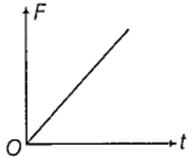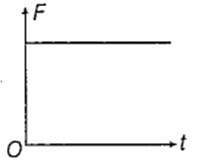 Multiple Choice Questions
Multiple Choice QuestionsWhen the displacement is one-half the amplitude in SHM, the fraction of the total energy that is potential is
The equation of a simple harmonic motion is X = 0.34 cos (3000 t + 0.74), where X and t are in mm and sec respectively. The frequency of the motion in Hz is
3000
The displacement time graph of a particle executing SHM is as shown in the figure.

The corresponding force time graph of the particle is




A simple pendulum has a length l and the mass of the bob is m. The bob is given a charge q coulomb. The pendulum is suspended between the vertical plates of a charged parallel plate capacitor. If E is the electric field strength between the plates, the time period of the pendulum is given by
The equation of a simple harmonic wave is given by , where x and y are in metre and time is in second. The period of the wave in second will be
0.04
0.01
1
5
A.
0.04
The given equation is
Comparing Eq. (i) with standard wave equation, given by
A simple pendulum is suspended from the ceiling of a lift. When the lift is at rest its time period is T. With what acceleration should the lift be accelerated upwards in order to reduce its period to T/ 2? (g is acceleration due to gravity).
2 g
3 g
4 g
g
The equation of a simple harmonic wave is given by y = 6 sin 2π (2t − 0.1x), where x and y are in mm and t is in seconds. The phase difference between two particles 2 mm apart at any instant is
18°
36°
54°
72°
Two simple harmonic motions are represented by
The ratio of their amplitudes is
1 : 1
2 : 1
1 : 3
A particle executing a simple harmonic motion has a period of 6 s. The time taken by the particle to move from the mean position to half the amplitude, starting from the mean position is
A particle executes SHM with amplitude 0.2 m and time period 24 s. The time required it to move from the mean position to a point 0.1 m from the mean position is
12 s
2 s
8 s
3 s
